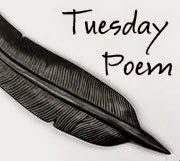Written in the Churchyard at Middleton in Sussex
Pressed by the moon, mute arbitress of tides,
While the loud equinox its power combines,
The sea no more its swelling surge confines,
But o'er the shrinking land sublimely rides.
The wild blast, rising from the western cave,
Drives the huge billows from their heaving bed,
Tears from their grassy tombs the village dead,
And breaks the silent sabbath of the grave!
With shells and sea-weed mingled, on the shore
Lo! their bones whiten in the frequent wave;
But vain to them the winds and waters rave;
They hear the warring elements no more;
While I am doomed - by life's long storm oppressed,
To gaze with envy on their gloomy rest.
- Charlotte Smith ((1749 - 1806)
I have been reading a small book, "101 Sonnets from Shakespeare to Heaney" edited by Don Paterson and published by Faber and Faber. It has been a revelation - there is a very interesting introduction which discusses that old question "what is a sonnet?" (the answer - it has fourteen lines - probably) and goes on to explain why the sonnet in particular is a perfect shape to contain human thought.
This is followed by the sonnets, from 101 different poets, many familiar, but others new to me. One of these is Charlotte Smith. Years back when I studied poetry at high school, it didn't occur to me that we were not taught any female poets. If pressed, I could have named Christina Rosetti ("Goblin Market") and Elizabeth Barrett Browning ("Sonnets from the Portuguese") and if I thought even harder, I might have remembered Eileen Duggan, whose poem "The Kingfisher" was thought suitable for primary school children - but that was it, against the dozens and dozens of male poets that were taught to us or at least mentioned.
There are of course many contemporary women poets - and I've gradually become aware of earlier ones - Emily Dickinson, Margaret Cavendish, Anne Bradstreet, Amy Lowell and others - but hadn't come across Charlotte Smith before picking up this book. The sonnet form became highly popular in England during the Elizabethan period, but then fell into disregard. It was largely due to Charlotte Smith that it became popular again among Romantic poets such as Wordsworth. For this, she deserves to be much better known.
Tuesday, May 29, 2012
Subscribe to:
Post Comments (Atom)



No comments:
Post a Comment